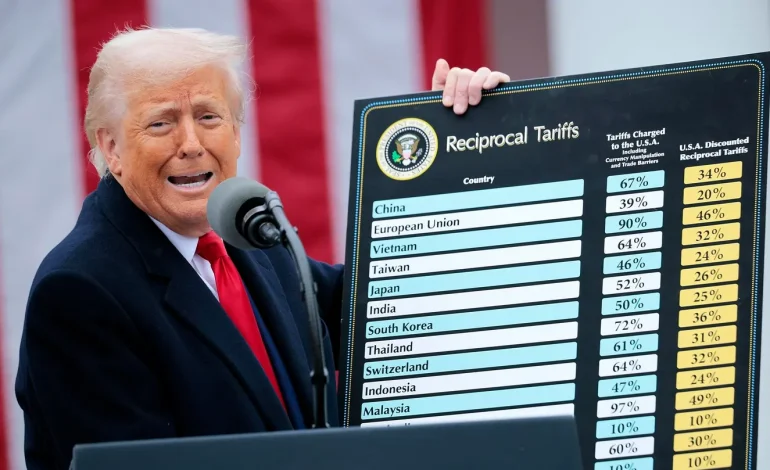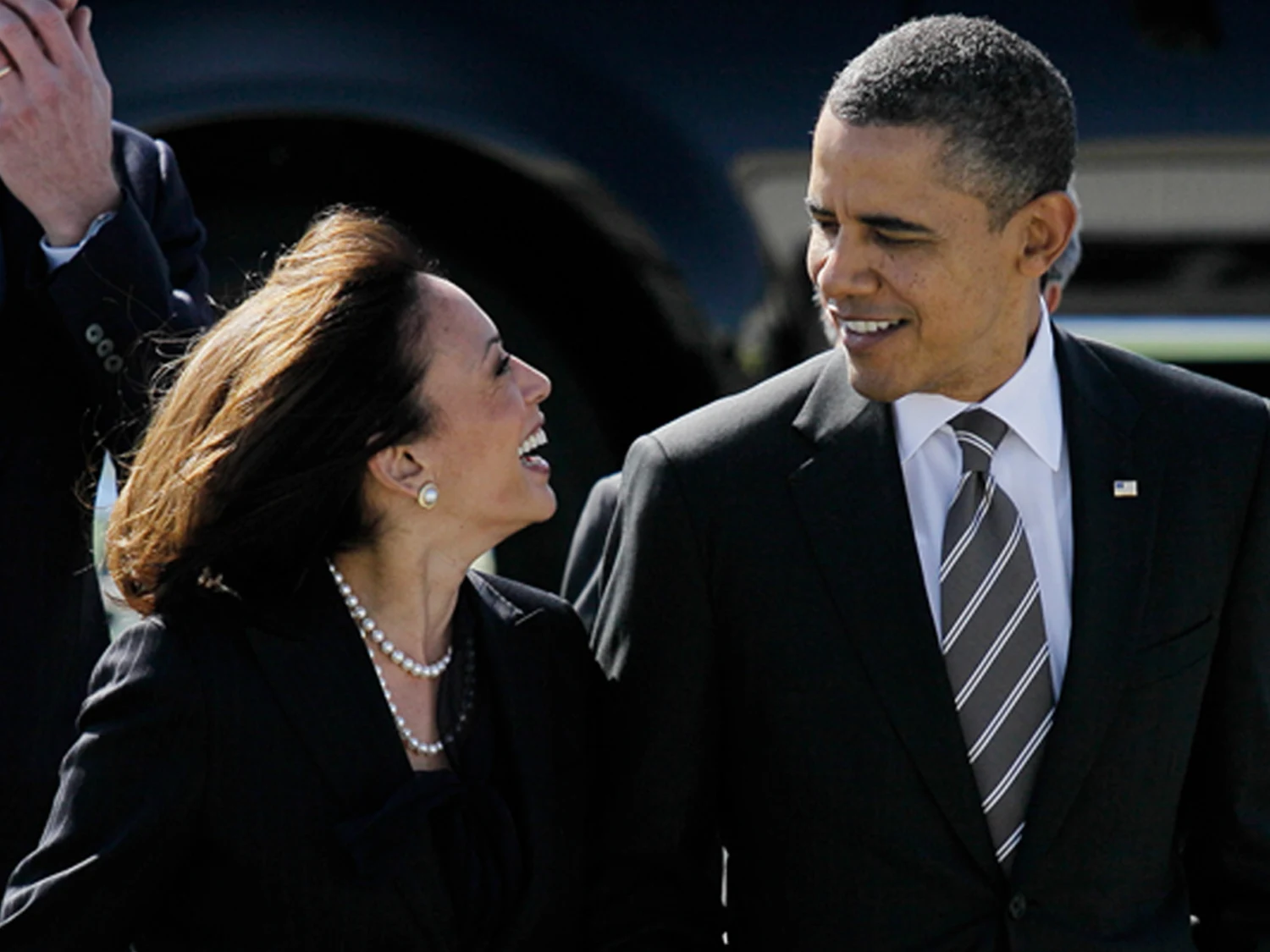The New York Times, Reuters, Bloomberg, Forbes, and Bureau of Economic Analysis contributed to this report.
President Donald Trump’s steep global tariffs are now showing up clearly in the data — and they’re reshaping US trade in real time.
New figures from the Commerce Department show that in August, after Trump’s new tariffs kicked in on Aug. 7, imports of goods and services dropped 5.1% to $340.4 billion. That’s a sharp pullback as higher trade taxes hit shipments from roughly 90 countries.
Because imports fell so much, the US trade deficit — the gap between what America buys from the world and what it sells — narrowed almost 24%, to $59.6 billion, down from $78.2 billion in July. It’s the smallest monthly deficit since late 2023.
Companies didn’t just wake up in August and panic. They spent months stockpiling ahead of Trump’s “Liberation Day” tariffs, which he first unveiled in April and then paused twice before finally putting them into force this summer.
Once the higher rates went live on Aug. 7 — including:
- 15% tariffs on goods from Bolivia, Ecuador and Nigeria;
- 20% on products from Taiwan;
- 50% on exports from Brazil.
— many US firms pulled back hard.
In August, businesses cut purchases of:
- Industrial supplies and materials;
- Machinery and capital goods (like computer accessories and telecom gear);
- Pharmaceutical ingredients;
- Food, feeds and beverages.
Imports of goods alone fell 6.6% to $264.6 billion.
Roughly half the total drop in imports came from one thing: nonmonetary gold. Investors had piled into gold in July as a safe haven ahead of the tariff deadline. Those flows reversed in August, with imports of nonmonetary gold down $9.3 billion.
Exports didn’t escape the turbulence.
- Total exports edged up just 0.1% to $280.8 billion, thanks mainly to services like travel and royalties.
- Goods exports actually fell 0.3% to $179 billion.
Foreign buyers cut back on:
- American consumer goods, including pharmaceuticals;
- Cars and car parts;
- Gold.
That was partly offset by:
- A $2.4 billion jump in capital goods exports, boosted by computers;
- A $0.8 billion increase in crude oil exports;
- Higher exports of services, including travel, maintenance and intellectual property fees.
The goods deficit shrank 17.5% to $85.6 billion, and on an inflation-adjusted basis, the real goods deficit fell to $83.7 billion, the smallest since the end of 2023.
On the surface, this looks like a win for Trump, who has long argued that a big trade deficit is a sign of U.S. weakness and that America should make more of what it consumes.
But the story is messier.
Economists note that the recent plunge in the deficit is heavily distorted by timing games:
- Companies rushed to import earlier in the year to beat looming tariffs, inflating imports and the deficit.
- Once tariffs hit, imports snapped back down.
That “tariff whiplash” has produced wild month-to-month swings in trade and, in turn, in GDP. Trade knocked a record amount off growth in the first quarter, then added it back in the spring. August’s smaller deficit will likely be a tailwind for third-quarter GDP, because more US spending went to domestically produced goods and services instead of imports.
Zooming out, though, Trump is nowhere near shrinking the deficit for the year:
- Through August, the year-to-date goods and services deficit is up 25% compared with the same period in 2024.
- Exports are up 5.1% so far this year — but imports are up 9.2%.
As economist John Ryding put it, imports have been driven by companies “anticipating and trying to beat higher tariffs” — a surge before each deadline, then a drop after.
The latest round of global tariffs pushed the effective US tariff rate above 18%, the highest since 1934, according to estimates from Yale’s Budget Lab. That’s a historic shift for an economy built on relatively open trade for decades.
For a while, companies cushioned the blow. Because they had stockpiled inventory in advance, many were able to delay passing higher costs on to customers. But as those warehouses have emptied, more firms have quietly started raising prices.
That’s politically dangerous for Trump, who ran in both 2016 and 2024 on promises to keep costs low for working families. Democrats leaned hard into cost-of-living worries in recent elections and notched wins in part by framing prices — including those boosted by tariffs — as a pocketbook issue.
The White House seems to know it’s vulnerable: last week, the administration rolled out new tariff exemptions aimed at lowering some food prices.
Trump’s tariff strategy also faces legal jeopardy.
The Supreme Court is now weighing whether he overstepped his authority by using the 1977 International Emergency Economic Powers Act to justify some of his broad import duties. The justices sounded skeptical of parts of his case during recent arguments.
If the court rules against him, some of the August tariffs could be curtailed or struck down. Even so, the president still has other trade tools he can use — and officials and analysts widely expect he would roll out new measures to replace at least some of any tariffs that are invalidated.
For companies that trade across borders, the bigger problem is uncertainty.
- Tariffs were announced in April, briefly applied, then paused for four months, then re-imposed in August at new rates.
- The August trade report itself was delayed more than a month because of a 43-day federal government shutdown, underscoring how political turmoil is complicating economic planning.
- Businesses have repeatedly had to front-load orders, rework supply chains and rethink pricing as tariff threats come and go.
Economist Carl Weinberg summed up the paradox: the drop in imports is “what tariff advocates expected,” he said — but it may just as easily be the hangover from an earlier rush to beat the very tariffs now in place.
In other words, Trump’s tariffs are clearly “working” in the sense that they’re disrupting trade. Whether they’re strengthening the US economy in a lasting way, or just creating costly volatility for businesses and consumers, is still an open question.










The latest news in your social feeds
Subscribe to our social media platforms to stay tuned